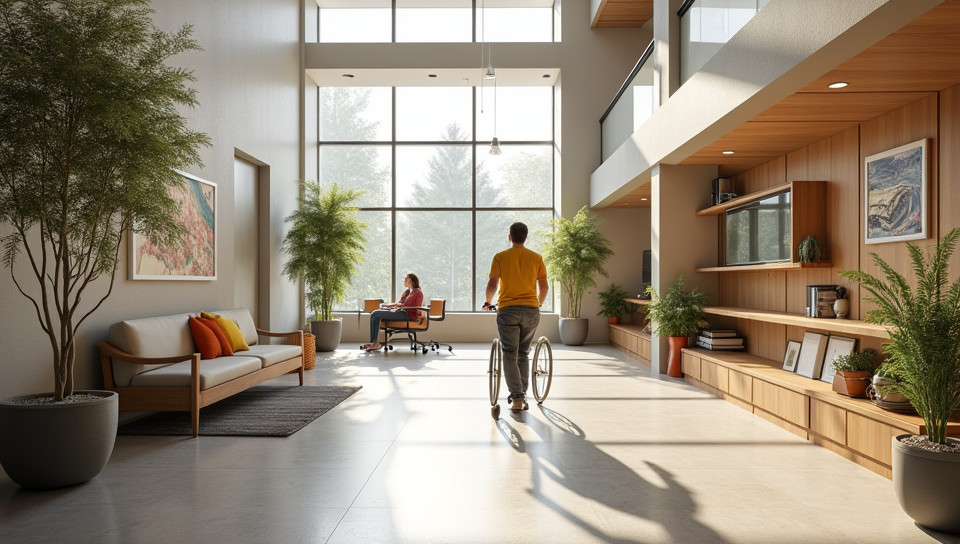Inclusive environments benefit from accessible design 99%

Creating Spaces for All: Why Inclusive Environments Thrive on Accessible Design
As we design and build our communities, cities, and workplaces, it's easy to get caught up in creating spaces that are functional, aesthetically pleasing, or cutting-edge. However, in the pursuit of these goals, we often overlook a crucial aspect of space-making: accessibility.
The Impact of Inaccessible Design
Inaccessible design can have severe consequences on individuals and communities. For people with disabilities, navigating environments that aren't designed with their needs in mind can be frustrating, humiliating, or even debilitating. This lack of inclusivity not only affects the individual but also impacts their sense of belonging and participation in society.
The Benefits of Accessible Design
On the other hand, accessible design has a profound impact on individuals, communities, and societies as a whole. When spaces are designed with accessibility in mind, everyone benefits:
- Better social interaction: Inclusive environments foster connections among people from diverse backgrounds.
- Increased productivity: When all users can participate fully, teams are more effective and efficient.
- Enhanced creativity: Accessible design encourages innovation and imagination, leading to new ideas and perspectives.
- Improved well-being: People with disabilities experience reduced stress, anxiety, and feelings of isolation.
The Role of Technology in Accessible Design
Technology has made it easier than ever to create accessible spaces. Digital tools can help designers: - Conduct accessibility audits - Create inclusive prototypes - Test and refine designs for usability
However, technology is only a tool; true inclusivity requires a mindset shift and a commitment to understanding the needs of diverse users.
Conclusion
Accessible design is not just about meeting minimum requirements or avoiding lawsuits. It's about creating spaces that value and celebrate diversity, fostering connections among people from all walks of life. As designers, architects, and decision-makers, it's our responsibility to prioritize accessibility in every project we undertake. By doing so, we can build environments that are more than just functional – they're inclusive, vibrant, and truly representative of the communities they serve.
Inclusive environments benefit from accessible design because they promote social interaction, increase productivity, enhance creativity, and improve overall well-being. By embracing this approach, we can create spaces that not only comply with regulations but also uplift and empower everyone who uses them. The time to prioritize accessibility is now – for a more inclusive future, one space at a time.
- Created by: William Davis
- Created at: Jan. 9, 2025, 11:04 a.m.
- ID: 17527









